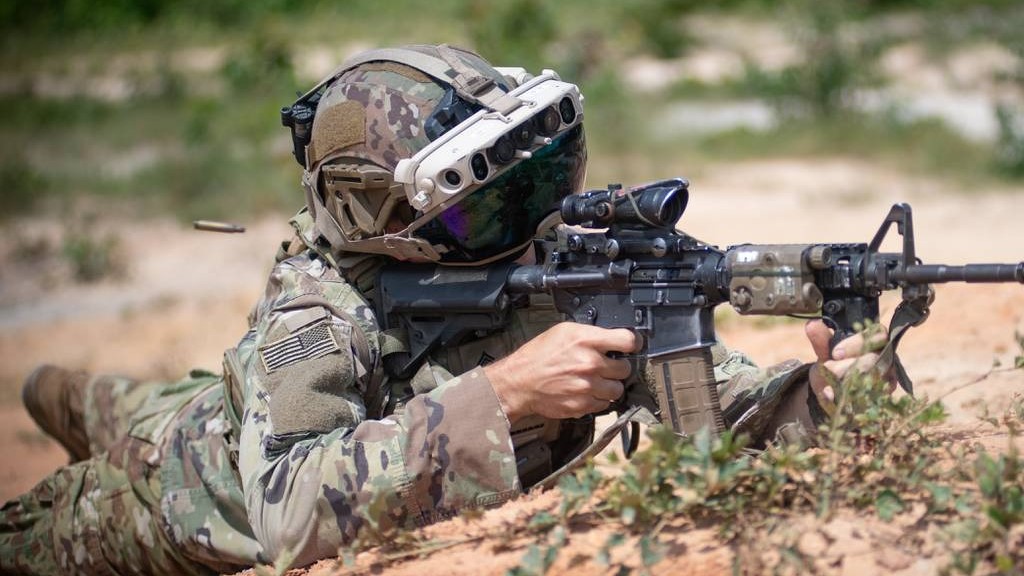$22 billion Microsoft deal with U.S. Army could be in jeopardy unless the tech giant can get the price of its militarized HoloLens to be "substantially less than" $80,000 per unit
Microsoft's militarized HoloLens continues to face challenges, this time surrounding the cost of individual units.

What you need to know
- The U.S. Army wants Microsoft to reduce the cost of IVAS militarized augmented reality headsets to "be substantially less than" $80,000 per unit, which is the current project cost.
- IVAS has faced several delays and challenges for several years, but Microsoft's deal with the U.S. Army regarding the headsets could be worth almost $22 billion.
- Microsoft discontinued HoloLens 2 recently and the company's mixed reality efforts are largely dead.
When Microsoft discontinued HoloLens 2 and announced end of support for the mixed reality headset, many asked if the announcement would affect the tech giant's planned military headset. Microsoft clarified at the time that it is "fully committed" to its Visual Augmentation System (IVAS), even after discontinuing HoloLens 2. While Microsoft is committed to IVAS, it appears the U.S. Army may have some hesitations. That is, unless Microsoft can lower the cost of individual IVAS units.
Microsoft needs to get the cost of an IVAS headset to "be substantially less than” $80,000, as highlighted by a report by Bloomberg. That figure is the current projected cost of an individual IVAS unit. Microsoft's current deal with the U.S. Army could be worth up to almost $22 billion, but several hurdles have to be cleared before things continue.
The U.S. Army has been testing IVAS, and initial tests were not great. Soldiers experienced headaches and nausea during testing, but things have since improved. Army acquisition chief Doug Bush said that testing" is going much better than the first time around" and that "a lot of problems have been fixed." Those comments were made during the annual Association of the US Army conference last week.
Bush also shared the unit costs will be "a key factor next year when senior leaders make decisions about going into production."
🎃The best early Black Friday deals🦃
- 💻Dell XPS 16 (RTX 4060) | $2,299.99 at Best Buy (Save $750!)
- 📺LG Curved OLED Monitor (32-inches) | $849.99 at Amazon (Save $650!)
- 🎮Amazon Fire TV Xbox Game Pass bundle | $74.99 at Amazon (Save $62!)
- 🔊2.1ch Soundbar for TVs & Monitors | $44.99 at Walmart (Save $55!)
- 💻Dell G16 Gaming Laptop (RTX 4070) | $1,299.99 at Dell (Save $450!)
- 🎧Sennheiser Momentum 4 ANC | $274.95 at Amazon (Save $125!)
- 📺LG C4 OLED 4K TV (42-inches) | $949.99 at Best Buy (Save $450!)
- 💻Samsung Galaxy Book4 Edge (X Elite) | $799.99 at Best Buy (Save $550!)
- 🎧Baseus Hi-Fi Bluetooth Headphones | $69.99 at Amazon (Save $80!)
IVAS units are militarized augmented reality helmets that can provide soldiers powerful insights in real time, such as issuing warnings for threats. The headsets also include night vision and are much more durable than commercial or enterprise augmented reality systems. Those specs and the cost of developing IVAS add up. Bloomberg highlighted that the display, battery, and chest unit of an IVAS unit cost $41,824 (as outlined by budget documents for the project). The rest of the cost is related to engineering, software support, and working with the Army.
While IVAS units are expensive, Microsoft is looking into ways to reduce costs. "We are going through the program to identify where we can reduce costs," said Microsoft Corporate Vice President for Mixed Reality Robin Seiler.
"It’s a fairly complex system, so when you look at cost reduction you have to look at it from a component level, from a labor level and from your supply chain," she added.
All the latest news, reviews, and guides for Windows and Xbox diehards.
Death of Microsoft HoloLens
The move of HoloLens to the Microsoft graveyard has spanned across several years. The saga included former HoloLens lead Alex Kipman being accused of "verbal abuse and sexual harassment" and leaving the company, HoloLens 3 being called a "s--t show," and Microsoft killing its Windows VR platform.
Microsoft has largely shifted its virtual and augmented reality efforts to making software work on other platforms, such as Meta Quest and Apple Vision Pro. Despite the shift in strategy, the tech giant seems committed to its plans to fulfil the IVAS contract with the U.S. Army.
The next major test of IVAS will occur from April to June this year, during which the headset will undergo further field testing. Following that testing, the Army will either commit to full production or move in a different direction.

Sean Endicott is a news writer and apps editor for Windows Central with 11+ years of experience. A Nottingham Trent journalism graduate, Sean has covered the industry’s arc from the Lumia era to the launch of Windows 11 and generative AI. Having started at Thrifter, he uses his expertise in price tracking to help readers find genuine hardware value.
Beyond tech news, Sean is a UK sports media pioneer. In 2017, he became one of the first to stream via smartphone and is an expert in AP Capture systems. A tech-forward coach, he was named 2024 BAFA Youth Coach of the Year. He is focused on using technology—from AI to Clipchamp—to gain a practical edge.
